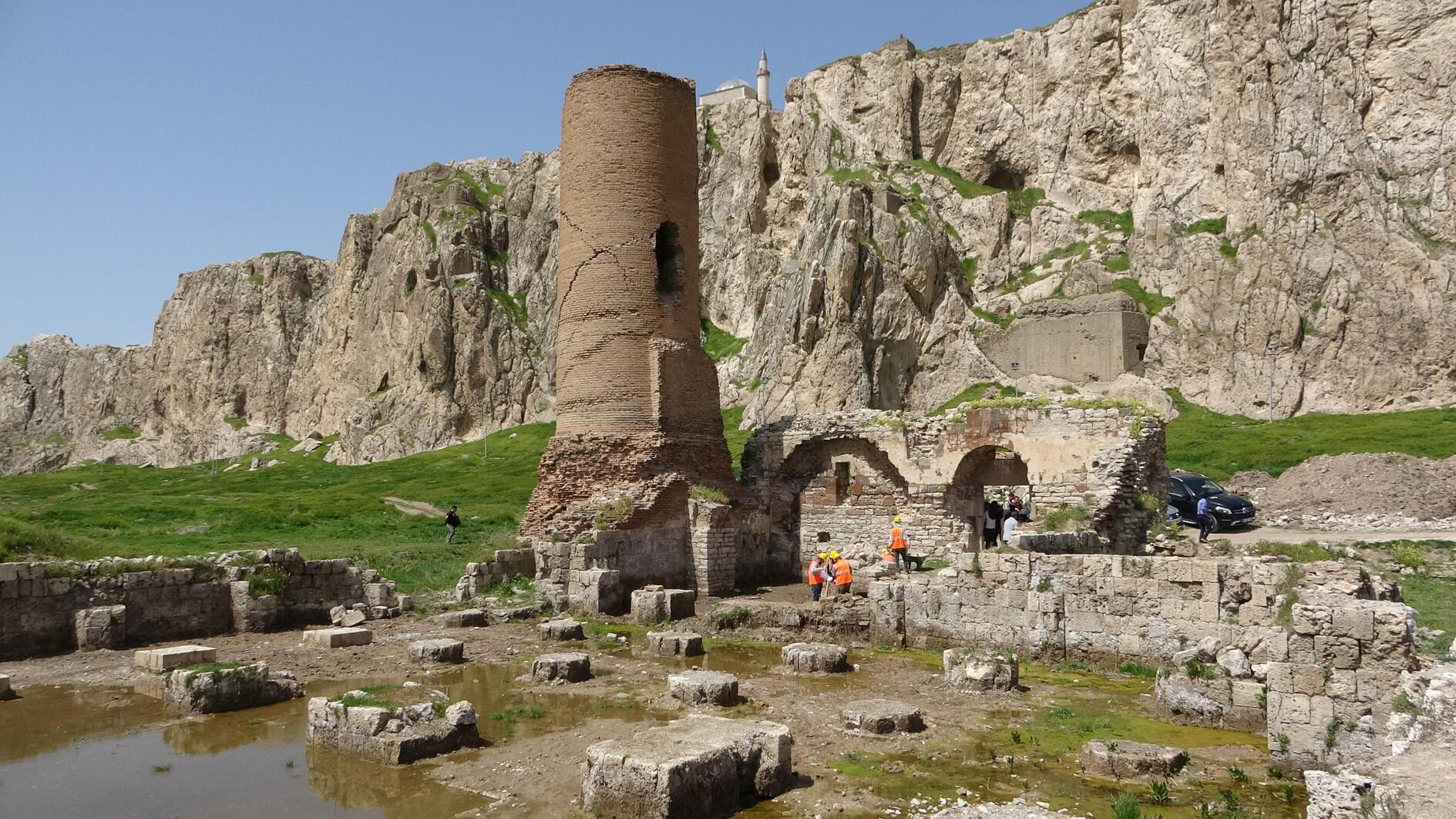
Efforts to restore 12 architectural remains from the Seljuk and Ottoman periods in the Old City of Van to the south of Van Castle are bringing the area’s historical grandeur back to life.
Located in eastern Türkiye and spanning 450,000 square meters, the Old City of Van served as a cultural crossroads from 3000 B.C. to the early 20th century, hosting civilizations such as the Urartians, Scythians, Medes, Persians, Romans and Sasanians before coming under Islamic rule in the seventh century.
The city was conquered by Seljuk Sultan Melikshah in 1069 and subsequently ruled by various Turkic-Islamic states until it became a part of the Ottoman Empire. However, during the early 20th century, it suffered significant destruction due to Armenian uprisings and the effects of World War I.
Today, notable structures in the Old City of Van include the 12th-century Ulu Mosque, the 13th-14th-century Red Minaret Mosque, the Hüsrev Pasha Complex, the 17th-century Kaya Çelebi Mosque and the Surp Stephanes Church.
Restoration efforts that began in 2024 aim to preserve these architectural treasures for future generations.
Spearheaded by Türkiye’s Culture and Tourism Ministry as part of the “Heritage for the Future” initiative, the project is being led by Gülşen Baş Terzioğlu, an art historian at Van Yüzüncü Yıl University. Excavation and restoration work will resume in 2025 under her leadership.
Speaking about the project, Terzioğlu highlighted the city’s unique location, established on a plain south of Van Castle near a natural rock formation.
“The city was surrounded by three main gates within its fortifications. Unfortunately, events such as Armenian uprisings, the Russian invasion and World War I during the late 19th and early 20th centuries forced its abandonment. Since then, the site has been left to deteriorate, with its architectural heritage at risk of disappearing.”
During the 2024 studies, 12 key architectural remnants were identified including the famed Ottoman architect Mimar Sinan. The complex comprises a mosque, mausoleum, madrasa and soup kitchen. While the complex has survived in relatively good condition, its inn and bathhouses are slated for restoration in the coming years.
Elaborating on the broader goals of the project, Terzioğlu said, “The aim is to transform the Old City of Van into an open-air museum. Once completed, the project will enhance the area’s visibility and historical awareness. Visitors will gain access to detailed information through interactive systems, visual displays and written material.”
“Viewing platforms will also be installed to provide better perspectives of the historical sites, connecting restored structures through pathways. Controlled entry and exit points will further ensure the area’s preservation,” she added.